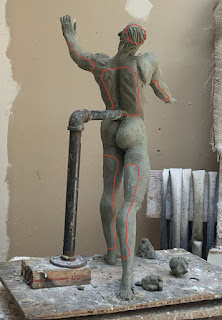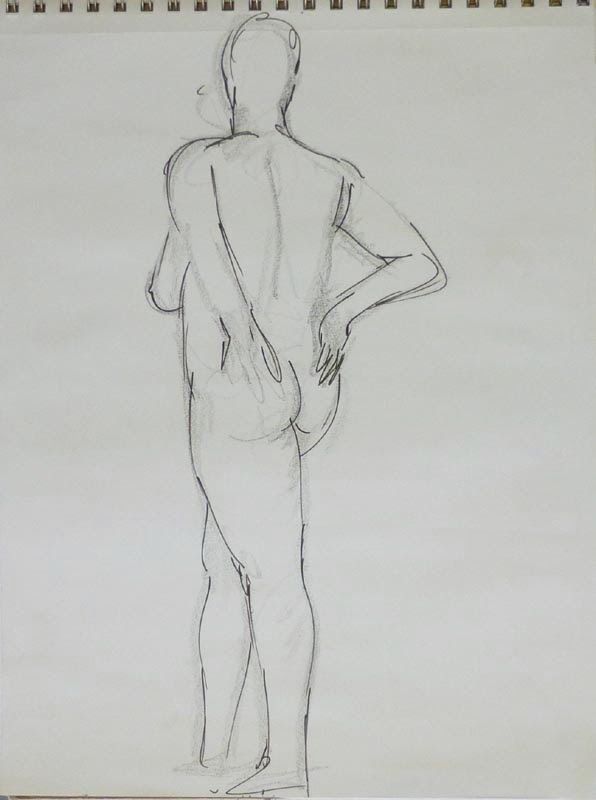I use this to melt the wax - turned to 250 it melts a 10 quart pot in 3 hours.
(This wax melts at 180 )
It melts quicker at 400 degrees, but it creates quite a stench and probably reduces the volume of wax.
This is needed to deal with the fumes.
I use two pots - so that one of them will always have hot wax to refill or reheat the other.
the wax is reinforced with strips of burlap. If not cut too small during mold cutting, they can be re-used.
Other tools used;
1-inch brush to apply liquid wax
Tongs and rubber gloves to handle pieces of burlap saturated with hot wax
Bolt cutter to help remove inner wire armature from the mold.
********************************* applying the wax**************************
When the wax is too hot, it runs like water right off the surface.
When it is too cold, it will not catch details you may want.
I let the melted wax cool until it begins to form a crust on the top of the cooker.
Stir the wax after the pot is unplugged and begins to cool.
The wax works best when it is thick like jelly or jam.
Usually - I build up a quarter inch of wax before applying strips of wax soaked burlap
except: I apply wax soaked burlap directly to the plastilene surface on those areas that will be removed as extraction windows. Otherwise - the surface wax is likely to become delaminated from the burlap strips.
It seems best to apply burlap to a waxed area immediately - again, to prevent later delamination.
Extra care must be taken for the face - and the mold as a whole may need to be reinforced with heavy layers of burlap -- or even pipes of sticks of wood as necessary
The NUMBER ONE DISASTER is when the emptied mold breaks or bends before it has been filled with casting material.
This piece required no wood or pipes for reinforcement -but I did build up the areas between the arms and torso - as well as near the ankles.
It is also important to build up the front of the torso on a standing piece since a large window will be cut in the back, leaving the mold weak in the middle of the piece.
*********
The hot wax makes the plastilene soft - and easy to remove from the mold. So it is best to begin removal as soon as possible. If you start too soon, the wax mold itself will still be soft and pliable. This is a bad thing! If you start too late, the plastilene will need to be dug out laboriously.
I begin heating the wax in the early morning, while still doing last minute changes to the plastilene.
About 2pm I begin to apply the separators - and half an hour later I’m applying the wax.
By 3pm, that job is done and I take about an hour lunch break.
By 4pm I am cutting the extraction windows and removing plastilene. I use a circular cutting disc on a rotary tool to begin the cut as clean as possible - then finish off with a serrated knife.
After the mold has been filled (in this case with Forton MG reinforced with fibre glass), the wax can be removed after softening it in a tub of hot water. ( I fill a plastic garbage can with hot water from the tap)
You will notice in the above example that the left hand was destroyed ( and actually, the right hand needed to be rebuilt with expoxy clay as well)
You will also notice the seams running down the arms and legs where the extraction windows were cut.
The back of the torso has not yet been attached to the figure because, in this case, I was not sure exactly how it should fit. It was cast separately and then attached later.





















































